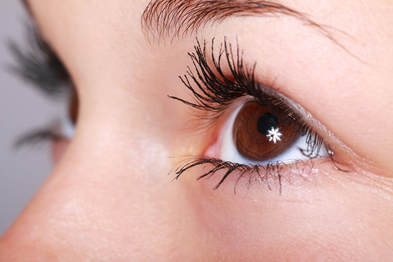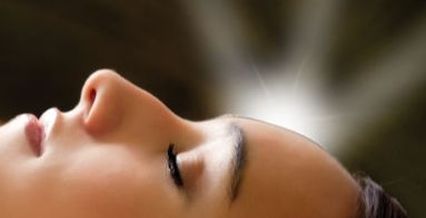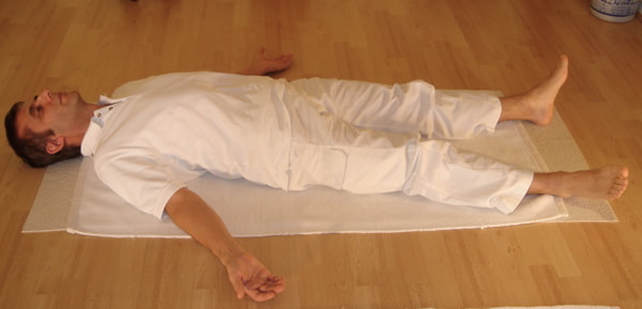Many people just don’t like meditating in a sitting posture, as they prefer a horizontal position instead.
Some practitioners also want to meditate or practice mindfulness in every possible situation and bodily posture, from sitting to lying in bed, to walking, to exercising, and even to sleeping. Here you will find some ideas, backed with great feedback of numerous practitioners, that might be helpful to all of you wanting to meditate even while lying down. But first, why should we do the meditation in a horizontal position in the first place? Benefits of Meditation Lying Down There are so many benefits. As all other types of meditation and mindfulness, this kind of practice will bring you:
These are not claims, these are the facts. They have been confirmed by countless scientific researches and explorations, and you can check it out on the Internet and numerous scientific magazines. Lying Down Meditation as Preparation for Sleep One of the most reliable methods that can lead you to a conscious and deeply relaxing, rejuvenating sleep is Yoga Nidra. It is an ancient practice which can bring you exquisite results. One of the most reliable methods that can lead you to a conscious and deeply relaxing, rejuvenating sleep is Yoga Nidra.
Nidra, which means “yogic sleep,” is a meditation that deals with deep sleep consciousness. During this meditation, through which you are typically guided by an instructor, you are scanning your body and entering a very deep state of relaxation. During this process, your body will slip into a deep sleep, and yet your mind will remain fully aware.
How to Meditate in Horizontal Position First, if you are tired, do not close your eyes, as you will dive into sleep soon. If you feel fresh and energized, and still don’t want to, for example, do a walking meditation outdoors, then you may close your eyes. It is advisable that your lying posture is similar to the ‘savasana’ pose in yoga, which basically involves lying down flat on the back with your palms facing upward. It is advisable that your lying posture is similar to the ‘savasana’ pose in yoga, which basically involves lying down flat on the back with your palms facing upward. 
1. Relaxation
There are many methods of relaxing the body, and I would recommend here one of the Reintegration System’s techniques, called “Relax and Reintegrate,” as it will bring you not only a deeply relaxed state but also a deep calmness of the mind, which is an important introduction to the next part of this meditation. 2. Feeling the Contact-Points In this stage, you will merge with your physical senses. Choose several contact-points between your body and the bed. These points will usually be on the back side of your body, including a few on your head, legs, and arms. For instance, these points may be your heels, lower back, shoulder-blades, nape, elbows, and palms. So, when you lie down, feel the contact of your body at every point consecutively, for 15-30 seconds each. Feel the sensation of the bed touching your skin. You may also check other points - of your contact with the blanket or rug, for example. Then feel sensations of all these points at the same time, as a whole. Repeat this procedure several times. 3. Wide Attention The point of ‘Wide Attention’ phase is to bring your mind into a deep state of diffuse, wide and inclusive attention which will allow you to keep your mind fully awake and clear. Next, open your eyes (if they are closed), look at the ceiling and pick up one distinctive point on it. (This we can call the ‘physical attention,’ as opposed to ‘mental attention,’ which means to focus your mind externally or internally on something.) Concentrate on that point for 15-30 seconds. If any thought arises, just accept it and return your physical and mental attention to the point on the ceiling. The point of ‘Wide Attention’ phase is to bring your mind into a deep state of diffuse, wide and inclusive attention which will allow you to keep your mind fully awake and clear.
Then, while keeping your eyes fixated on the point, extend your mental attention to a circular area around the point. Slowly extend the area of your mental attention, while keeping your physical attention at the chosen point.
Wander around the room for a while with your mental attention. If your eyes unintentionally move, simply return them to the first point of the physical attention, and continue with the other parts of your eyesight, that are preferably more away from the physical point of attention. You may even try to become aware of the things behind your physical eyesight or to include sounds and other sensations. After several minutes of shifting your mental attention around, try to immerse yourself into a unified attention - be mentally attentive of your physical point AND everything else, including yourself. Other Possibilities You may also practice mindfulness of breath while lying on the bed, but keep your eyes open in order to avoid falling asleep. The procedure is very simple: just follow your breath with your mental attention. There are several types of this exercise though. One is to feel mild sensations of the air touching your nose’s interior, as it enters and exits the nostrils. Another one is to follow the air all the way down to the bottom of the lungs and back to the nostrils. Or, you can follow the movement of your diaphragm. You may also practice the Relax to Reintegrate technique, listen to guided meditations, listen to meditation music, or practice many other methods available online. Sleepiness Sooner or later, even if you are always feeling fresh and restful during this practice, you will nevertheless experience sleepiness or drowsiness. This is the main challenge of “horizontal meditation.” People typically don’t sleep enough, so every time one lies down, their body perceives it as a chance for getting more precious sleep. Hence, many practitioners are too often overwhelmed with sleepiness in that position. Other than chronic lack of sleep, there is another very important reason for sleepiness in the horizontal type of meditation: our subconscious structures, deeply hidden in unconsciousness, are now emerging.
So, sleepiness is not a bad thing per se. You may have gotten to the point where you are relaxed enough to dig into your subconscious levels, where the core of your life issues lay.
Usually, when you have a lingering problem in your life, it originated as a suppressed, forgotten emotion, decision or belief, which is still active today. The only way to forget or suppress it is to envelop it into layers of unconsciousness. As the state of deep sleep generally equals to the state of unconsciousness, you will have to go through these layers in order to uncover the suppressed content. Therefore, when you access it, intentionally or unintentionally, you may experience a feeling of sinking into the unconsciousness, and it will often manifest itself as sleepiness. Thus, when sleepiness arises, try to stay awake; change your posture, rub your eyes, do the Dissolving the Temporary I technique (DTI), but don’t fight it too much. You are maybe just too tired and your body needs sleep more than meditation. So, if nothing helps, sleep for a while. But don’t always give up. Sooner or later, you must face the subconscious elements that are revealing themselves and reintegrate them. Sleepiness is not a bad thing per se. You may have gotten to the point where you are relaxed enough to dig into your subconscious levels, where the core of your life issues lay.
Next time be more assertive. Try to do meditate when you are fresh enough. If you become sleepy again, that’s a definitive sign that you’ve come to a deeply suppressed content, that may be the source of one of your chronic problems. Change your posture, if needed go to the bathroom and wash your face and then continue where you left off. Try to evoke what had emerged in your conscious mind immediately before you became sleepy. What were you thinking about? It is the structure you must deal with. Sooner or later, you need to reintegrate the problematic part of yourself, it will otherwise manifest itself externally, making for even more problems.
Concluding Thoughts For reintegration of those subconscious structures, you have a variety of psychological or spiritual methods at your disposal, including numerous Reintegration techniques. And, what’s also important, try to avoid the situation in which you habitually fall asleep whenever trying to meditate in a horizontal position. It would make that particular meditative technique merely a trigger for the sleep. If you, however, want to do a meditation lying down as a preparation for sleep, the best choice is Yoga Nidra, in which your body will sink into sleep while your mind will stay blissfully conscious. So, meditation while lying down may be the most challenging type of your inner work, but it can also be its most rewarding form if you are assertive and persevere enough. You will begin the process of bringing up the long-forgotten and suppressed elements of your personality, from the depths of your unconscious mind, which is great news. Good luck in your inner endeavors! :-)
1 Comment
|
Please note that most of the articles have a "Read More" break, which is sometimes hardly visible.
It is located at the bottom of visible part of the article, on the right side. To continue reading the article, click on that link. This page may contain affiliate links meaning we earn a commission if you use those links.
We only recommend pages we appreciate and trust. Archives
March 2023
Categories
All

|
For guest posts or placing ads on our website, please use the contact form on the 'About/Contact Us' page.





 RSS Feed
RSS Feed

